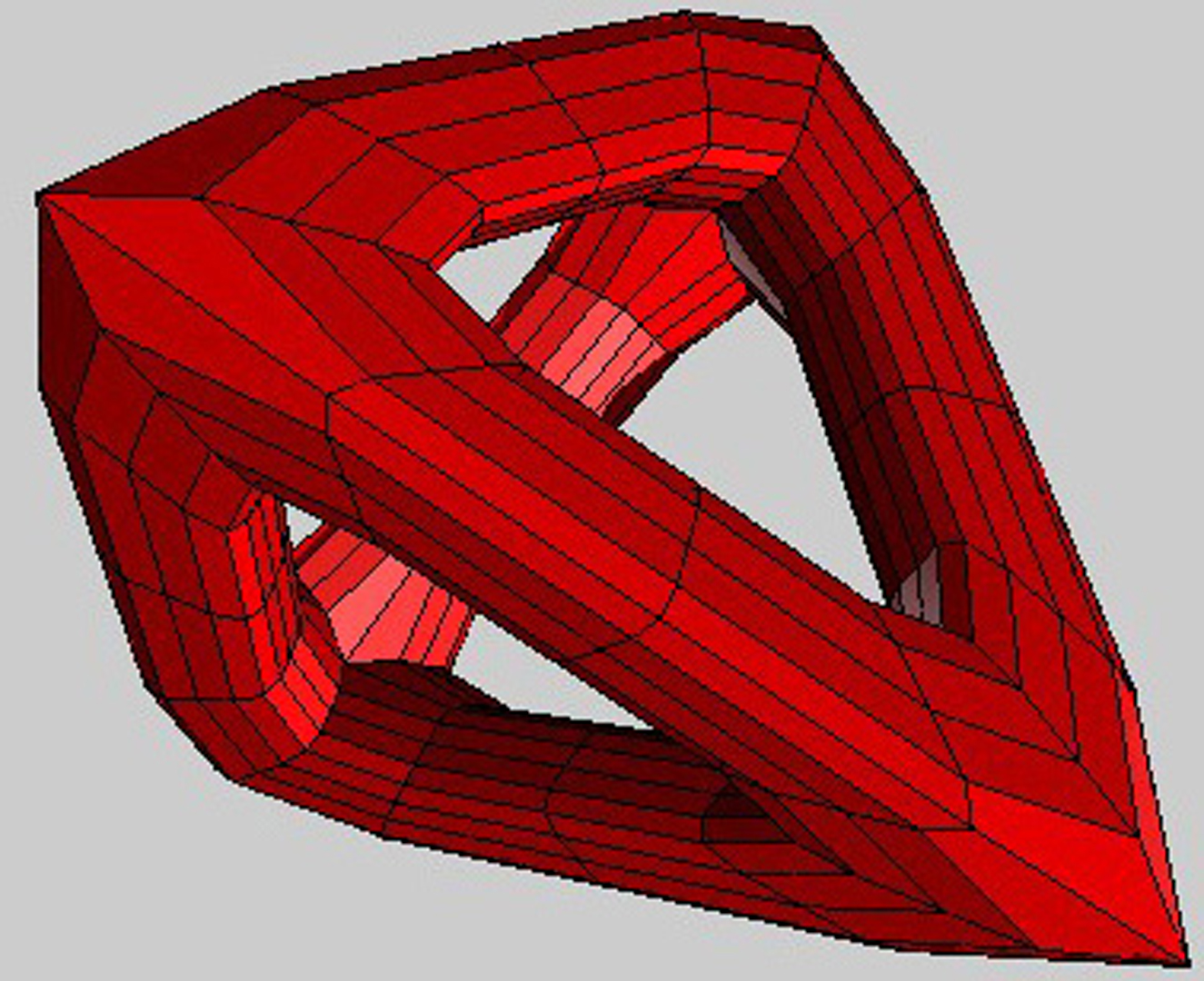“T-splines and T-NURCCs” by Sederberg, Zheng, Bakenov and Nasri
Conference:
Type(s):
Title:
- T-splines and T-NURCCs
Presenter(s)/Author(s):
Abstract:
This paper presents a generalization of non-uniform B-spline surfaces called T-splines. T-spline control grids permit T-junctions, so lines of control points need not traverse the entire control grid. T-splines support many valuable operations within a consistent framework, such as local refinement, and the merging of several B-spline surfaces that have different knot vectors into a single gap-free model. The paper focuses on T-splines of degree three, which are C2 (in the absence of multiple knots). T-NURCCs (Non-Uniform Rational Catmull-Clark Surfaces with T-junctions) are a superset of both T-splines and Catmull-Clark surfaces. Thus, a modeling program for T-NURCCs can handle any NURBS or Catmull-Clark model as special cases. T-NURCCs enable true local refinement of a Catmull-Clark-type control grid: individual control points can be inserted only where they are needed to provide additional control, or to create a smoother tessellation, and such insertions do not alter the limit surface. T-NURCCs use stationary refinement rules and are C2 except at extraordinary points and features.
References:
1. BAKENOV, A. 2001. T-Splines: Tensor Product B-spline Surfaces with T-Junctions. Master’s thesis, Brigham Young University.Google Scholar
2. CATMULL, E., AND CLARK, J. 1978. Recursively Generated B-spline Surfaces On Arbitrary Topological Meshes. Computer-Aided Design 10, 350–355.Google ScholarCross Ref
3. FORSEY, D., AND BARTELS, R. H. 1988. Hierarchical B-spline refinement. Computer Graphics 22, 4(August 1988), 205–212. Google Scholar
4. GRINSPUN, E., KRYSL, P., AND SCHRÖDER, P. 2002. Charms: A simple framework for adaptive simulation. ACM Transactions on Graphics 21, 3 (July), 281–290. Google ScholarDigital Library
5. KOBBELT, L. 2000. √3-subdivision. Computer Graphics, 103–112. SIGGRAPH 2000. Google Scholar
6. KRAFT, R. 1998. Adaptive and linearly independent multilevel B-splines. In Surface Fitting and Multiresolution Methods, A. L. Mehaute, C. Rabut, and L. L. Schumaker, Eds. Vanderbilt University Press, Nashville, 209–218.Google Scholar
7. RAMSHAW, L. 1989. Blossoms are polar forms. Computer Aided Geometric Design 6, 323–358. Google ScholarDigital Library
8. ROCKWOOD, A. P., HEATON, K., AND DAVIS, T. 1989. Real-time rendering of trimmed surfaces. Proceedings of SIGGRAPH 89, 107–116. Google ScholarDigital Library
9. SEDERBERG, T. W., ZHENG, J., SEWELL, D., AND SABIN, M. 1998. Non-uniform recursive subdivision surfaces. Proceedings of SIGGRAPH 98 (July), 387–394. ISBN 0-89791-999-8. Google Scholar
10. VELHO, L., AND ZORIN, D. 2001. 4–8 subdivision. Computer Aided Geometric Design 18, 5, 397–428. Google ScholarDigital Library
11. WELLER, F., AND HAGEN, H. 1995. Tensor product spline spaces with knot segments. In Mathematical Methods for Curves and Surfaces, M. Daehlen, T. Lyche, and L. L. Schumaker, Eds. Vanderbilt University Press, Nashville, 563–572.Google Scholar
12. ZORIN, D., AND SCHRÖDER, P., 2000. Subdivision for modeling and animation, SIGGRAPH’00 course notes.Google Scholar




